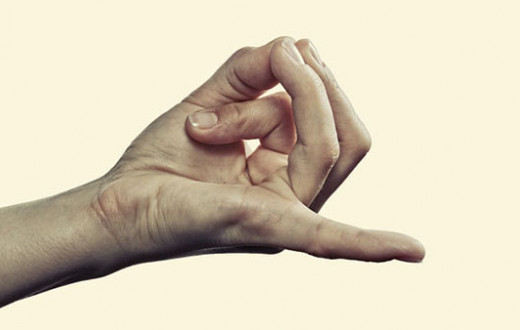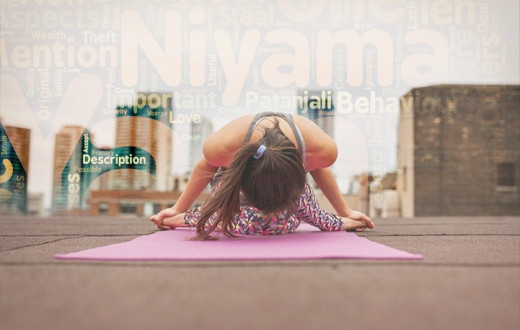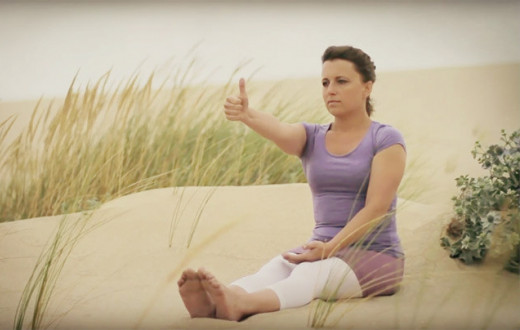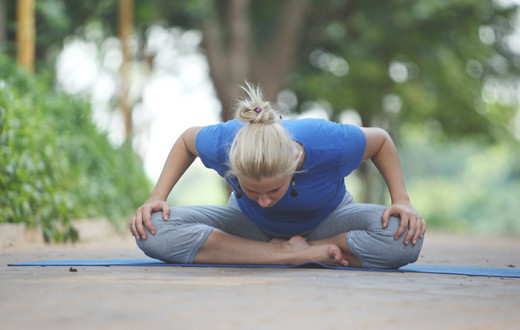By Elizabeth Herman | Posted: April 03, 2018
Hatha Yoga is arguably the most widely-recognized form of yoga in western culture. It’s the path of yoga focused around physical exercises (asanas) and breathing techniques.
Balancing sun and moon
At its essence, Hatha Yoga is the yoga of activity. The word "Hatha" comes from "Ha," which means Sun, and "Tha," Moon. Hatha Yoga blends energizing and dynamic yoga postures (under the symbol of the sun) with relaxing and meditative yoga postures (under the symbol of the moon). An excellent example of a posture sequence that energizes would be the Sun Salutation, or Surya Namaskar in Sanskrit. By combining both types of postures, the body’s energetic system is balanced and the mind and body are connected, creating the optimal ground for deep meditation.
Our energy system
The body is made up of a highly intricate energy system. For anyone to experience vibrant health and wellness, the energy flow must be in balance.
The ancient science of Ayurveda offers an understanding of this system that involves three types of energy, known as Gunas. All three types exist at different levels in the body at different times, and all are necessary.
- Too little energy (Tamas) can result in a dull, lethargic mind and a heavy and inert body.
- Excess energy (Rajas) results in an angry, irritable mind and a restless body.
- When the energy is balanced (Sattva), health and vitality is experienced.
This last state of perfectly balanced energy is expressed by a relaxed, alert mind, and a light and energetic body.
However, understanding the interplay of these energetic wavelengths, self-reflection can help you make changes to your energy level. For example, by eating certain foods and practicing certain yoga postures, you can start to experience more Sattvic energy, even when you know that the other two energies are with you.
Posture sequences
Hatha Yoga offers a balanced and well-rounded sequence of Yoga postures and breathing techniques. For example, the Sri Sri Yoga sequence intertwines active and passive postures and different breathing techniques so that the energy in the body is guided to the perfect place of equilibrium. Here, the emphasis is on practicing both asanas (postures) and pranayamas (breathing techniques) with strong determination.
With hatha yoga, using the breath and assuming the postures are the perfect combination to calm the mind as we begin to learn to meditate. As a beginner, it is advisable to learn more about prana (life force energy) and how to use the breath for deepening the postures.
Guidelines to bring success in your hatha yoga practice
The ancient yogis outlined ideals that each yoga practice should include, as well as those to steer clear of, during the process of establishing habits helpful to the purposes of yoga.
According to the classical Hatha Yoga text by Srinavasa Bhatta Mahayogendra, the following traits assure success in the practice. You can consciously nurture all of these characteristics in yourself:
- Enthusiasm
- Courage
- Perseverance
- Discrimination
- Unshakeable faith
- Avoiding excessive contact with people
Here are six tendencies that you can avoid, because they can be obstacles to a healthy yoga practice:
- Overeating
- Over-exertion
- Practicing severe austerities
- Being amidst people all the time
- A vacillating mind (unsteadiness, a wavering mind)
- Verbosity (too much talking, gossiping, and irrelevant discussions).
A vehicle for transcendence
The purposes of Hatha Yoga poses are often misconstrued in western culture. While the practice calms and balances the mind and body, the postures themselves and their immediate effects aren’t the end goals. Neither are the by-products of the postures. For example, greater flexibility in joints and other tissues, muscular strength, and physical grace and skill are also not the end goals.
Rather, the poses are a vehicle, bringing the mind and body rest in preparation for the ultimate state of transcendence, or Samadhi, which happens during meditation.
To further your understanding of how Hatha Yoga helps to facilitate meditation, you might want to explore the Sri Sri School of Yoga Teacher Training Program. Through this and other Art of Living Yoga programs you can deepen your practice and go further toward becoming a yogi!
Written by Elizabeth Herman based on wisdom talks by by Gurudev Sri Sri Ravi Shankar
New to yoga? Explore Yoga 101: A Simple Guide to Practice and Philosophy to Help A Beginner.





























